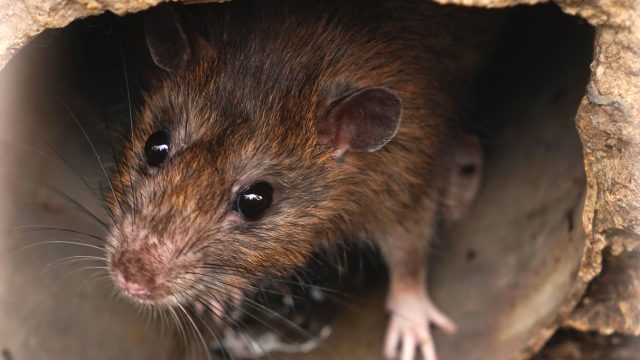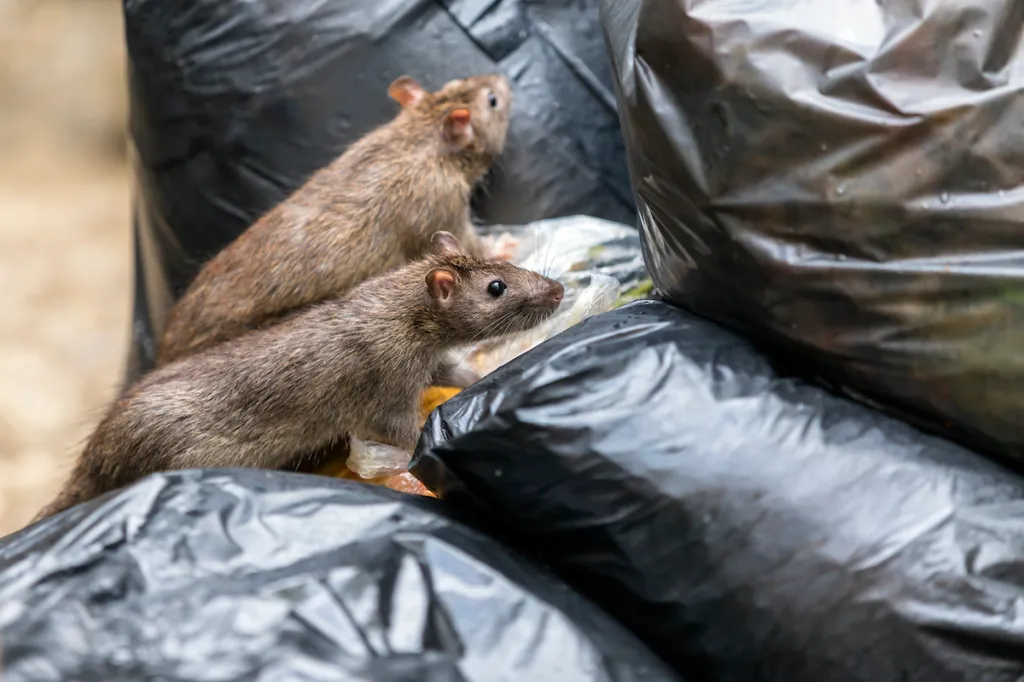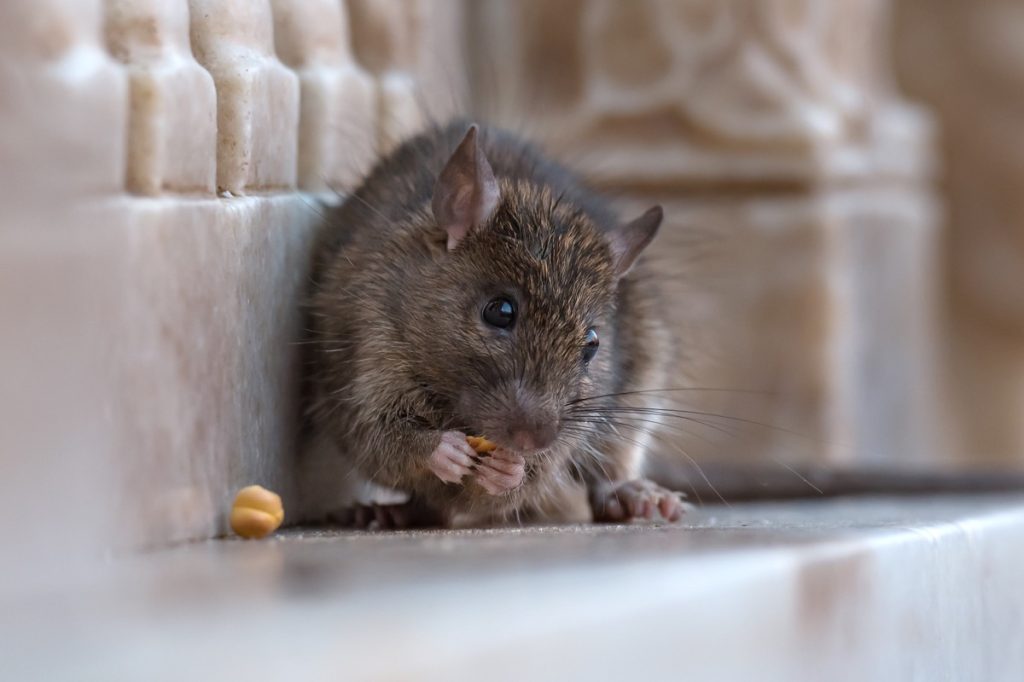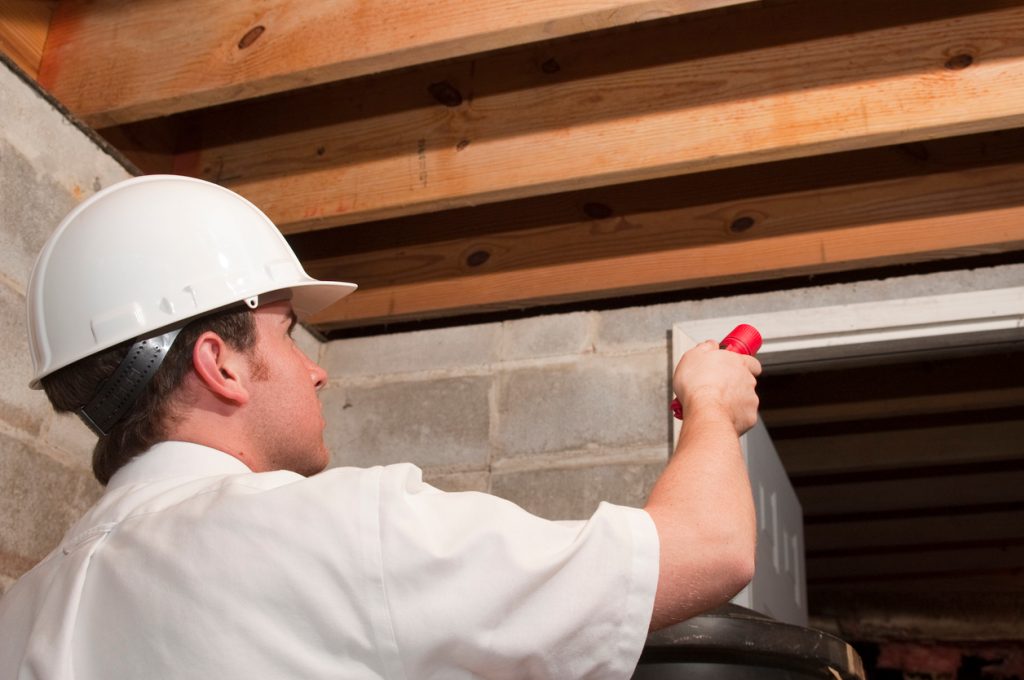This U.S. City Has the Biggest Rat Problem, New Data Shows—And It’s Not New York

Any major city is bound to have a few problems it has to contend with, whether it’s terrible traffic or soaring rent prices. But when it comes to daily issues, no one likes dealing with a major rat problem. The pests have been a fixture of urban life for millennia, surviving alongside humans by scouring trash and invading homes—all while becoming ever more adept at escaping extermination in the process. Most people likely assume that the largest cities will always have more rodents running about. But according to new data, there’s one city that has taken the unenviable title of having the biggest rat problem in the U.S.—and it’s not New York. Read on to see which urban area is crawling with the most pests.
READ THIS NEXT: If You Notice This Smell at Home, You May Have Mice, Experts Warn.
Rodent infestations can be a significant health and safety concern.

The idea of seeing a rat scurrying past your path on a walk isn’t something anyone relishes. But according to experts, people are right to feel squeamish around them.
“Rodents are notorious pests, and if they find a way into your home, an infestation can propel itself quickly as they are known to reproduce five to 10 times per year,” Shawn Varchetti, owner of D-Bug Pest Control, tells Best Life. “Rodents can cause major health concerns, and they can do some serious damage to the internal structure of your home. Rats are known to carry diseases such as tularemia, Salmonella, and hantavirus.”
Experts warn that their presence could pose another immediate safety threat, too. “This habit of chewing on wires is extremely dangerous, as the exposed wires can ignite flammable materials such as insulation and lead to unexpected house fires. In fact, the National Pest Management Association estimates that rodents cause 20 to 25 percent of all fires of unknown causes,” Joe Tomasiello of pest control company Deans Services tells Best Life.
He adds that the rodents can also get pretty cozy in your walls. “Rats are also known to use attic or crawl space insulation as nesting material, as it provides warmth and protection. Though they sometimes rip it up into small shreds to carry to their nest, rodents are also known to nest directly in the insulation. This can lead to reduced efficiency and higher heating and cooling costs,” Tomasiello cautions.
Data shows that this major city has the biggest rat problem in the U.S.

Everywhere from small towns to global metropolises can feel the effects of a rodent scourge. But research shows that population size isn’t the only determining factor in creating a rat haven.
On Oct. 17, pest services company Orkin released its annual ranking of the “rattiest cities” in the U.S. The list ranks metro areas by the number of new commercial and residential rodent treatments performed there from Sept. 1, 2021, through Aug. 31, 2022. Data revealed that Chicago had the biggest rat problem for the eighth year in a row, topping even New York City, which rose one spot to second place from last year’s rankings. Los Angeles rounded out the top three, falling to third place.
The rest of the top 10 included familiar places from last year’s ranking, including Washington, D.C., and San Francisco resting in fourth and fifth place, respectively. Philadelphia jumped a spot on the list to sixth, while Cleveland saw the biggest increase from last year in the top 10 by leaping two spots to eighth place. Baltimore, Detroit, and Denver rounded out the other top spots.
RELATED: For more up-to-date information, sign up for our daily newsletter.
Other notable moves on the list saw one state add two cities for the first time.

There were still plenty of other significant moves throughout the list worth noting. Both Hartford, Connecticut, and Miami entered the top 20 for the first time. And cities like Nashville and Tampa both saw considerable jumps of seven spots, landing them in 29th and 43rd, respectively.
However, the biggest jumps were seen by two Indiana cities making their first appearances on the list. Fort Wayne leaped 12 spots to land in 48th this year, while South Bend rose more than any other by skyrocketing 21 positions on the list to 44th place.
Experts caution that rat infestation season is just starting for many parts of the U.S.

Any city with a major rat problem knows that infestation can be a year-round issue. But according to the experts at Orkin, fall brings about cold weather that makes rodents more likely to seek refuge, food, and water indoors, especially between October and February. The company also points out that outdoor dining structures put up during the pandemic have made it easier for rats to reproduce and multiply, making their presence more noticeable than in previous years.
Experts point out that there are a few simple ways to tell when rodents have made their way into your home, including finding droppings along walls or in cabinets where they tend to travel. But they can also leave behind other clues.
“One of the most obvious signs that there are mice in your home is gnawing marks,” Riley Edwards of pest control company We Do Creepy previously told Best Life. “They have to gnaw constantly to keep their teeth from growing too long, and they will use just about anything they can get their teeth on. If you start seeing chewed-up pieces of paper or fabric, or small holes in walls or furniture, it’s a good indication that you have mice.”
Major rodent infestation issues can happen, and typically require the help of professionals. But if you’re hoping to take on rats and mice yourself, experts say there’s one thing you should remember.
“If you do opt to use traditional rodent traps, make sure to use effective bait, such as peanut butter, marshmallows, nuts, fruits, meats, or something of that nature,” Stuart Flynn of pest services company Bug-N-A-Rug tells Best Life. “Contrary to the idea that cheese should be used, these baiting materials are actually a lot more efficient, as they provide the rat with more calories and are therefore more attractive bait.”